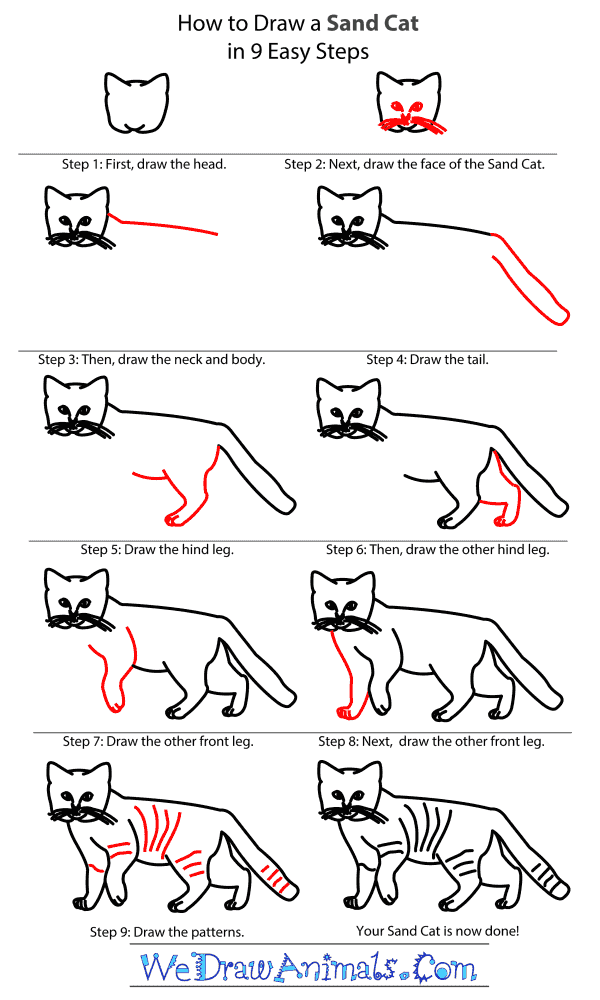In this quick tutorial you'll learn how to draw a Sand Cat in 9 easy steps - great for kids and novice artists.
The images above represent how your finished drawing is going to look and the steps involved.
Below are the individual steps - you can click on each one for a High Resolution printable PDF version.
At the bottom you can read some interesting facts about the Sand Cat.
Make sure you also check out any of the hundreds of drawing tutorials grouped by category.
How to Draw a Sand Cat - Step-by-Step Tutorial
Step 1: Start by drawing the outline of the head and ears
Step 2: Next, draw the eyes, nose, and whiskers. Make two small dots in the center for the nose with lines connecting to the eyes. The eyes are two almond shapes with dot inside of them. Draw lines on each side of the nose to make whiskers
Step 3: Draw a line to make the back
Step 4: Now, draw the tail continuing from the back line
Step 5: Draw the back leg and belly starting from the tail. Make the toes on the foot of the cat with small lines
Step 6: Draw the other back leg behind the first
Step 7: Draw a front leg with curved lines under the neck
Step 8: Draw another front leg under the head. Don't forget to make lines on the feet for the toes.
Step 9: Lastly, draw some stripes on the body by making vertical and horizontal lines. Copy the image exactly
Interesting Facts about the SAND CAT
The Sand Cat is a member of the mammal family and the scientific term for them is Felis margarita. The name Felis means “cat” and margarita is a reference to the person who is responsible for the original discovery of this animal. Another common name for this species is the Sand Dune Cat. It is the only relative member that lives deep in the desert, and is found in northern Africa or central and southwest Asia. They are well adapted to sand and stones, and surviving at great distances from water.
Did you know?
- The animal can be up to over 7 pounds.
- They can have a head and body that grows up to almost 2 feet long.
- Their tail can be more than 1 foot long.
- They can survive temperatures as low as 23 degrees Fahrenheit.
- The animal can survive temperatures as high as 126 degrees Fahrenheit.
- These have hair that can be over 2 inches long.
Their paws have thick fur to use as protection from hot surfaces. They have a wide body, short legs, long tail, and very light brown color on the back which is colored like sand. The face and stomach are white, and the large triangular ears are dark brown with black tips. Its greenish yellow eyes have a reddish line that extends outward across the face. Their nose and stripes on the limbs and tail are black. Since there are so few of these creatures, they are near threatened to extinction.










